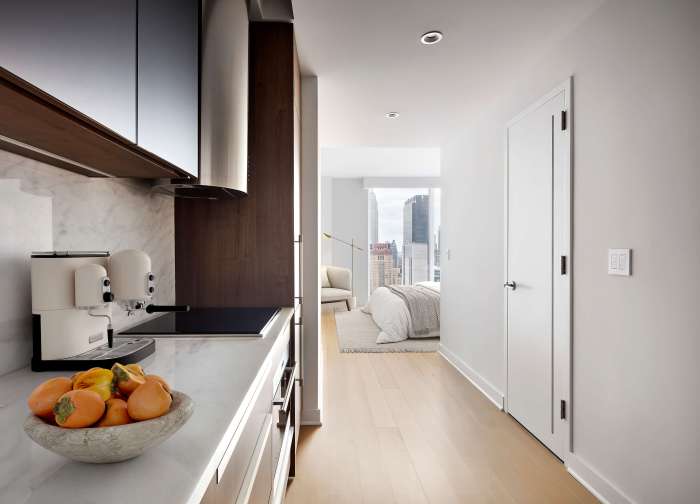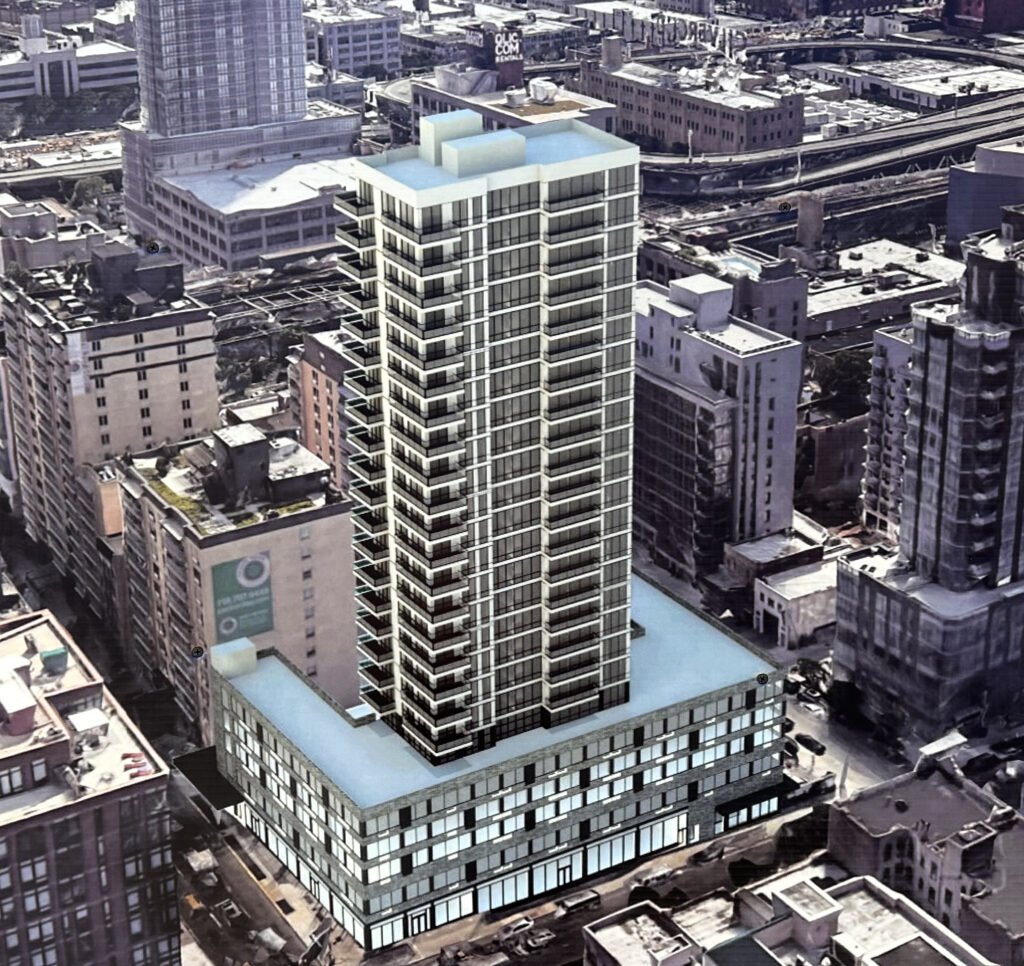
Good homes come in small square-footages — just ask the residents of Carmel Place, the city’s first new micro-apartment development in decades.
About a year after residents started moving into the Kips Bay development, several Carmel Place residents said they were satisfied in their 260- to 360-square-foot studios.
Billed as an experiment, the city relaxed its rules on minimum apartment-size at Carmel Place to see if micro-apartments could help house the growing singles population and drive down rents. Above nearly 5,000 square feet of donated city land, Monadnock Development constructed 55 micro-units, including eight set aside for homeless veterans and 14 affordable units renting for between $949 and $1,490 a month.
“For the first month that I moved in here, I could not get the theme of ‘Moving on Up’ out of my head,” said Robert Massie, 62, who snagged a veterans unit at Carmel Place. “If you’re a young person going for your first apartment, you have a job and you can afford it — yes, I would come on in.”
Massie said the only major lifestyle adjustment he has made is budgeting more for food. Carmel Place’s units come with hotel-size refrigerators and two-burner stoves, leaving residents little ability to stockpile ingredients in a freezer.
Frank Dubinsky, vice president of Monadnock Development, said his team had learned from its work in Kips Bay and would incorporate ovens and larger refrigerators in future projects.
But Dubinsky said he has not heard complaints about lack of space. He noted that many of the storage lockers built into Carmel Place’s basement have gone unused.
“Millennials are gravitating toward more simple lives and minimalism; consumer behavior [that’s] more experiential versus materialistic,” said Matt Alexander, 27, a Carmel Place resident who enjoys the social events organized for residents. “I kind of operated on a minimalist perspective even before I came into this.”
Dubinsky said Carmel Place is fully leased but, like other new buildings, has used rental concessions from time to time. There is still a lengthy waitlist for its affordable units, since about 60,000 people applied for them. Whenever a market rate unit is listed online, about 20 to 30 prospective renters reach out, according to Chris Bledsoe, co-founder of Ollie, a company specializing in providing hotel-style services and social events in buildings such as Carmel Place.
Location was a big draw for resident Nate Santos, 30, who can now bike to work in about 20 minutes, but he said the price seemed a bit high, even for midtown Manhattan. The 32 market-rate units cost between $2,550 and $3,150 a month.
“Especially with the rec room and with the rooftop, it’s like, ‘All right, I don’t have to go out and spend money,’ ” said Santos, an editor of a lifestyle magazine. “If you look at it that way, it makes it a little easier to digest the cost.”
Residents looking to lower their rent cannot opt out of the perks Ollie coordinates, such as regular house cleaning, Wi-Fi, cable and Hello Alfred, a butler-esque app that can pick up dry cleaning and groceries.
But Dubinsky argued Carmel Place was a good deal when compared with other new studios in Kips Bay, especially when you factor in Ollie’s services.
“We have to undercut buildings that compete with us and provide more,” he said.
Based on their experience at Carmel Place, Dubinsky and Bledsoe said they expect to see more micro-apartments debut soon.
In March 2016, the city passed legislation allowing developers to include apartments with less than 400 square feet of space in buildings with larger units in relatively dense areas. (The law did not apply to Carmel Place, which was already under development with its waiver provisions, but had not yet welcomed tenants.)
Several apartments smaller than 400 square feet are already on the market, but they were grandfathered into the system after 1987 when the city passed a law aimed at eradicating poor, tenement-style conditions.
But not everyone is eager to see smaller apartments spread. Assemb. Deborah Glick, who represents the western side of downtown Manhattan, said micro-apartments are not adding affordable, healthy homes.
Glick said she did not believe the city undertook a formal analysis of Carmel Place.
The city did not respond to questions about whether it has studied Carmel Place, but Dubinsky noted he has taken several city officials on tours of the development.
“It’s promoted by people who have 400-square-foot closets, and all it will do will increase the profits of developers,” Glick said.

















